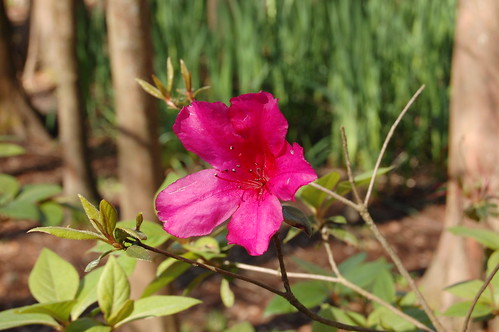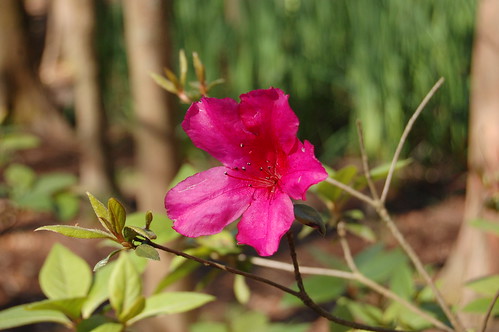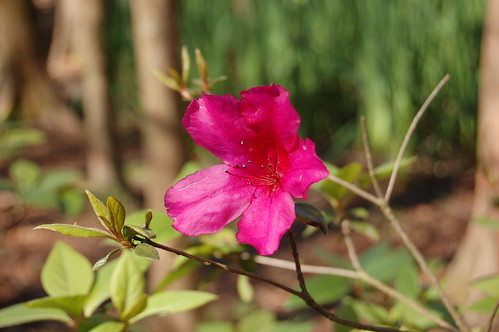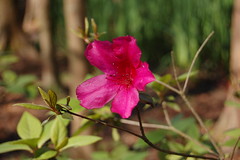The aperture is basically the hole in the lens that lets light in. Normally it's closed, but it opens to a predetermined size when you take a picture. When you're using a dSLR you can control the aperture size in the Manual and Aperture-priority settings. The wider the aperture (which corresponds to a smaller f/ number), the shallower the depth of field. A shallower/smaller depth of field corresponds to a smaller in-focus area in the image. Here is a series of images I took at Avery Island to illustrate the effect a change in aperture can have:

f/25.0, the smallest aperture setting here, the largest depth of field

f/13.0

f/7.1, see how the background is getting blurry?

f/6.3

f/5.6, the largest aperture here, and thus the most shallow depth of field
In PW form, here are the first and last next to each other for comparison:


See the difference in the background, and even the leaves in the foreground?
A couple random things about aperture. As you might expect (or already know), the wider the aperture, the more light is let in. You can then use a faster shutter speed, letting you take crisper, clearer photos (although, blur can be good). Also, if you are using a zoom lens, your maximum aperture will change in relation to the focal length you're using. On my kit lens, the range of maximums is from f/5.6 when it's at 55mm to f/3.5 when it's at 18mm. The f/3.5 setting lets in more light, so it's useful in low-light situations. If you can't get the exact composition you want, you can always creatively crop. (Photo editing is your friend!)
Someday, I hope to get a macro lens and then really rock out the fun with depth of field, in photos like this:

Image by Flickr user ecstaticist, used under terms of CC License.
And with that, fun time is up. Time to get back to work! Hope y'all have a great week! =)
I love smaller depths of field, especially on flower pics. Actually any pics, I love the blur.
ReplyDeleteAt the photography workshop I attended this weekend, the pro shot most of her pictures on 1.6!
ReplyDeleteShe has a 85mm 1.2 and she shoots a few notches up from wide open.
I am coveting that lens!!
The wider the better for me, baybee!
1.6!?! Holy cow! I covet, as well. I agree with both of y'all - I love wide apertures and shallow dof!
ReplyDeleteSo interesting, I'm going to have a go this weekend, fiddling a bit! :)
ReplyDeleteAs to pronounciation, we tend to say "a-per-tcha" ... which is actually terrible!!
thanks for this little post. i'm a very visual person and love how you have the photos side by side.
ReplyDeletei'll probably have to re-read it a hundred times and star at the photos forever...lol